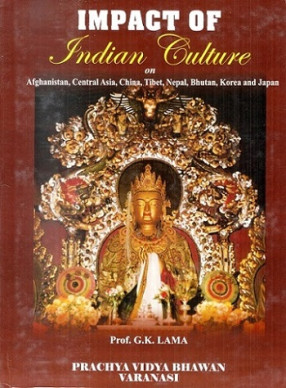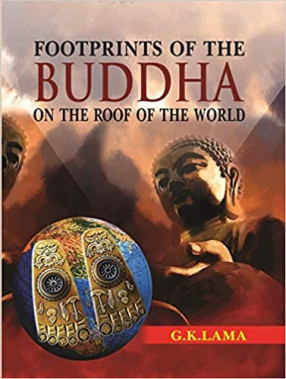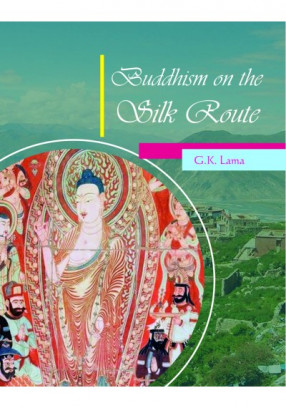Impact of Indian Culture on Afghanistan, Central Asia, China, Tibet, Nepal, Bhutan, Korea and Japan
The present book begins with the propagation of Buddhism and Indias cultural influence on Afghanistan, Central Asia, China, Tibet, Bhutan, Nepal, Korea and Japan. It covers an era of about one thousand five hundred years. The book is well supported by literary as well as archaeological evidences along with maps and illustrations.
Indian culture has been characterized in terms of the spiritual ideal which is accepted in it as the supreme value. The ideal of a spiritual life is not identical with the idea of a religious life as understood in Semitic religions. In fact, if we define religion as a way of life in conformity with some unique and literal revelation, such that it might lead to a desirable after-life for the individual, then, whatever the dogmas implied whether of God or soul, after-life or judgment, or of the invisible efficiency of following spiritual or moral prescriptions. Such a concept would be distinct from that of following the spiritual ideal, even though the former or religious concept in its various forms could well be offered as an interpretation or a theoretical and practical elaboration of the latter, spiritual ideal. In fact the spiritual ideal tends to manifest itself in different but recognizably similar forms in different cultural ensembles. Spiritual idealism is a universal phenomenon but in different cultures it assumes different forms and is given different degrees of importance. Its essence consists in seeking the true nature of man as a spirit, consciousness, or experience. In fact, it appears to be nothing but the self-revelation of human experience. There is no ideal higher than man provided the essence of man is found within him in the spiritual core of his being rather than in his relation to nature or other men. The spiritual quest is the search for the inner and deeper possibilities of experience.
Inspite of geographical barriers and racial obstacles, the intercourse between India and other Asian countries has remained almost uninterrupted since the early ages of history. Such an intercourse did not cease even during the times of armed invasions from across the frontiers; in fact, it increased after each invasion and most of the foreign influence on India has been brought about by these invasions.
The teachings of Buddha were accepted by Asian countries like Afghanistan, and Central Asia, China, Tibet, Nepal, Bhutan, Mongolia, Japan and Korea. From the beginning of Christian era with the advent of Kushan Empire, Mahayana Buddhism was propagated in Afghanistan, Central Asia and China. Through China it reached to Korea and then to Japan. Nepal was influenced by Buddhism since the time of Buddha himself, later Asoka has also contributed in its expansion. After 7th-8th century CE Buddhism also entered in the Himalayan region like Tibet and Bhutan. Propagation of Buddhism outside India was done by kings, religious ambassadors and traders. Ample literary and archaeological evidences are available in support of these incidents. In this way we can say that from 3rd century BCE upto 12th century CE the spiritual thoughts of Buddhism and Brahmanism highly influenced Central and Northern Asia. After 12th century CE Afghanistan and Central Asian countries accepted Islam. Hence, the book throws light that how this region of Asia was influenced by the Indian culture for about 1500 years. Every aspect of Indian culture like religion and philosophy, language and literature, art and architecture, traditions, medical science, astronomy, astrology etc enriched this region of Asia. It is a humble attempt to remind the Indian people about not only their glorious past but also its continuity.
Get it now and save 10%
BECOME A MEMBER










Bibliographic information